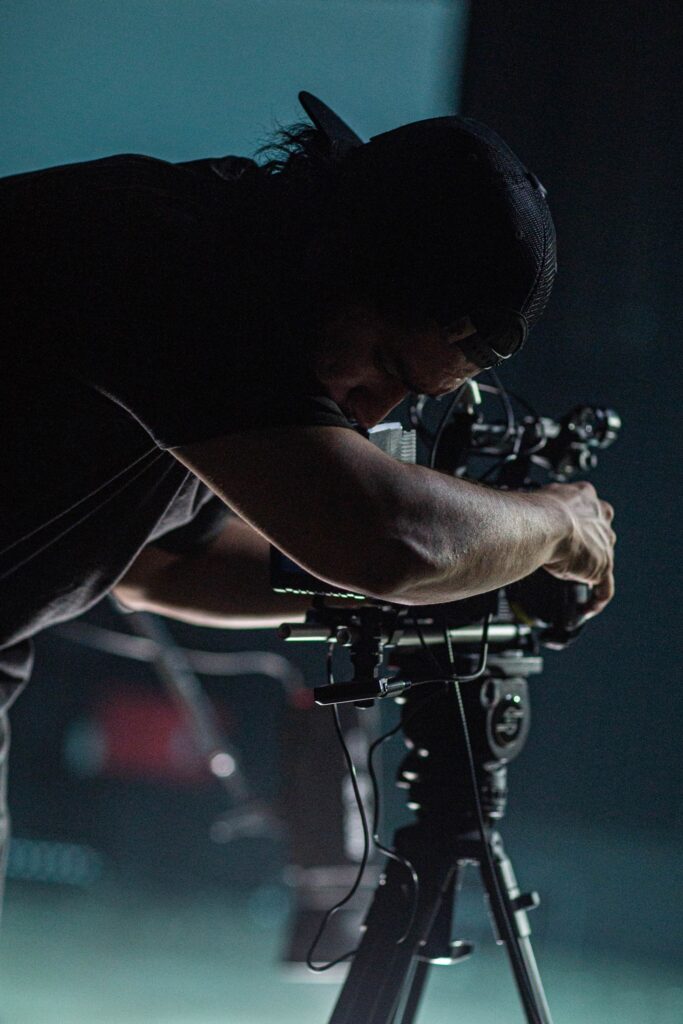“They won’t fear it until they understand it. And they won’t understand it until they’ve used it. Theory will take you only so far.” —J. Robert Oppenheimer, Oppenheimer, Universal Pictures, 2023
In 1889, Oscar Wilde proclaimed, “Life imitates art far more than art imitates life.” Don’t believe him. Consider the following:
- In 1869–1870, Jules Verne wrote Twenty Thousand Leagues Under the Sea, and in 1954, Richard Fleischer directed a movie by the same name.
- In 1960, Navy lieutenant Don Walsh and Swiss engineer Jacques Piccard settled the Pathosphere Trieste on the floor of the Mariana Trench.
- In 1902, Georges Méliès did a film Le voyage dans la lune (A Trip to the Moon).
- In 1969, man stepped foot on the moon.
- German expressionist Erich Pommer saw a different tomorrow in his 1927 film Metropolis.
- The industry got even more creative… Ex Machina, Blade Runner, The Matrix, 2001: A Space Odyssey, Minority Report, Terminator, RoboCop, and dozens more.
Obviously, no one takes movies seriously!
Despite the noise surrounding it today, AI didn’t just suddenly emerge on the scene. It has been working in the background for years, helping people find information quickly on the Web, recommending products/shows based on what they’ve seen in the past, even recommending different ways of writing stuff.
Tech leaders like Microsoft, Google, and others have been rushing to be theAI leaders. People working in the field have been cautioning to be aware and slow down—a bit—because we don’t know what we don’t know. The one thing everyone agrees with is that it’s coming, certainly can be very useful, mistakes will be made, and there will always be bad people ready to do bad stuff.
A growing number of examples have been cited showing how generative AI, ChatGPT, GitHub, and derivatives of AI/ML can take over time-consuming, boring tasks and deliver reasonable, sometimes better, results and solutions. For example, during a 60 Minutes segment a few months ago, Demis Hassabis, CEO of DeepMind Technologies, noted, “AI dreamed up a winning chess strategy no human or computer had ever seen before.”
Despite uncertainties, generative AI, ChatGPT, GitHub, and every derivative of AI/ML are integral parts of every company’s earnings report. Studios, networks, and streamers are aggressively exploring ways they can use the technology to improve the quality and economics of their content development, production, distribution. At the same time, the industry’s unions/guilds are focused on determining how the technology will impact the work, income, and future of content creators.
“AI is already hard at work assisting industry professionals at every level of filmmaking,” said Allan McLennan, president of 2G Media Optimization. “At NAB, every booth was talking up their generative AI enhancements, and at IBC this fall, it will be even more prevalent.”
“Tools from Adobe, Avid, Blackmagic Design (DaVinci Resolve), and others are already helping editors in many phases of postproduction,” said McLennan, noting that the AI-enabled post tools can cut down on drudge/redundant work, insert placeholder images, add simple effects, enhance/identify/retrieve footage, making it more searchable by shot types, emotional arcs of the characters, scenes, objects, talent, and colors. In other words, it can help post pros be more effective and efficient. “They’re becoming smarter and will become super useful editing/production tools that will save time in tedious and iterative postproduction work, as well as help editors meet deadlines,” he added. AI can also assist the project team even before the shoot begins.
Increasingly, it can help carve through reams of crew names, helping select the best team members for the film or show based on their past success with similar projects. It can also recommend location options based on the storyline, identify issues that might arise, and make suggestions that will improve the film/show while staying on budget (i.e., time/money).
When it comes to actual production, AI is increasingly used to optimize camera angles, map lighting, and make other technical recommendations that deliver the results and impact producers and cinematographers want, without costly reshoots or attempting to make the corrections in post.

AI increasingly is a silent partner/assistant that helps the DP (director of photography) on the production set. AI is being used throughout the film/show production industry, including by guild and union folks, who actually create the material for the projects. It helps in corrections, rewrites, suggesting edits, and delivering material that can be used by the producer, director, filmmaker, and actors. “The operative word,” McLennan said, “is ‘helps.’ It doesn’t replace creativity, ingenuity, collaboration, and the emotional intelligence that’s necessary to turn a bunch of ideas, facts into something that connects, resonates with the viewer.”
The writers’ strike—the first since the 100-day strike in 2007—is about wages, team size, and other issues surrounding what is basically a freelance industry where artists move from job to job. With the increasing streaming content/services, creatives are seeing shortened seasons and the volatility of films/shows being canceled/replaced to boost subscriptions and viewer interest (in an area where AI can estimate audience reception and audience mix).
Generative AI and products like ChatGPT can do a “decent” job of contributing to the first draft, given specific guidelines; but it can fall short, at this time, in developing what-if scenarios, alternative story flow, surprise twists, completely original ideas, or emotional stories that have what we can only describe as the human touch. Producers, showrunners, and writers have already found that AI tools can accelerate the creation process by repeating segments, putting multiple pieces together, and streamlining the writing process; but when the script is delivered, the finished product doesn’t match what humans can do… at this time. A lot has been said about people across all industries who will be replaced by AI.
A widely circulated/cited Goldman Sachs report estimated that a quarter of work tasks could be replaced by AI and that two-thirds of the jobs be at least partially automated, but 63% of the workforce would continue in their present position though with much lighter workloads. The report also emphasized that 60% of people today are employed in jobs that didn’t exist back then because of new technology, and there’s no reason to believe we won’t adjust/adapt to the new productivity tools. There was one benefit from implementing generative AI in the video storytelling arena that should be of concern to management, according to Our World in Data, a collaboration of England’s University of Oxford and the Global Change Data Lab.
Studio and show executives have already “played with” generative AI and ChatGPT to prepare loglines and develop pitches based around past surefire films/series, rather than take a chance on something new, unique, and engaging. If they’re one of those folks in the $1 million–40 million income bracket, they probably already use the tools to greenlight decisions. If it’s a hit, they can take full credit for the concept that worked in the theater or on the home screen. If it doesn’t click with the audience, they can always pass the buck and blame the technology. It’s a logical way to CYA and protect that cushy office and huge salary.
OK so we’re being a little facetious, but industry bosses have more than a passing interest in what Wall Street has currently embraced, especially with the promise of doing what the Street wants studios, networks, and streamers to do in the months/years ahead—lower costs and improve profits. “A prolonged strike will undoubtedly have an impact on how quickly studios, networks, and streamers could begin using generative AI/ChatGPT,” McLennan observed, “but it won’t mark the end of the need for writers, writing rooms. The technology will be another good tool when used in creating and bringing story ideas to life, just as computers were exceptional aids for writers to put their ideas, thoughts, and emotions on paper when they put down their pens.”
Creativity and ingenuity will always be the foundation of the visual stories the industry develops and distributes to a very human audience.
When it does begin to be more widely used by video content creators, there’s no reason not to take some sage advice from J. Robert Oppenheimer when he said, “I don’t know if we can be trusted with such a weapon. But I have no choice.”
But we learned how to harness power, put it to productive uses, and even explore the vast universes around us.
Right now, generative AI, ChatGPT, and the other derivations are extremely interesting technologies we will learn to better use to enhance production, deliver more production efficiencies, and create even better/more compelling entertainment.
